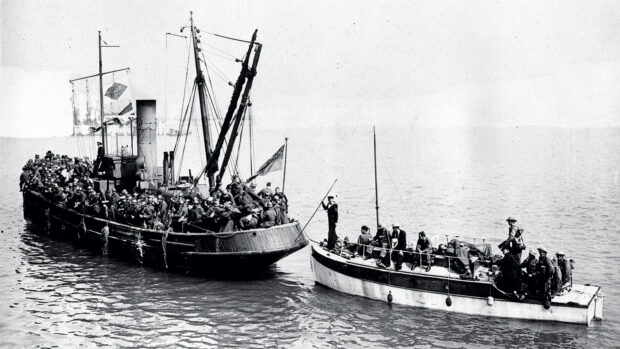The man who designed and built affordable powerboats
Chris Tremlett, who died on January 13 after a long illness aged 71, was a prolific boat designer/builder who brought the relatively expensive sport of powerboat racing within reach of a host of enthusiasts who would otherwise have been spectators on the shore.
His interest began with a pram dinghy at the age of 14, before slowly progressing to larger craft. It was later ownership of a Fairey 14 hot moulded sailing dinghy that began a long association with this form of construction, which used thin strips of mahogany and waterproof adhesive compressed over a mould in a hot oven.
He found that similar methods had been used by early piano makers to achieve curved frame cases. The same practice was also used by shop fitters building counters, display cabinets and other curved laminations.
Tremlett felt that hot molding was the best way to make a strong hull but had neither the space nor capital for a custom-built autoclave and the equipment it would require. Instead, he chose an easier route.
His method was simple. Strips of veneer were laid over a wooden mould before being covering by a rubber blanket and evacuating the air. The compressed veneers and glue were then cured by a long blast of hot air. Although less glamorous, the end result was a strong, affordable hull. It was this avenue he adopted after establishing his business on the banks of the River Clyst, a tributary of the Exe near Topsham, Devon, in 1961.
Early Tremlett craft were aimed at the up and coming sport of waterskiing but it soon became apparent a market also existed in powerboat racing, particularly offshore, which had been established with the first Cowes-Torquay race in 1961. However, although some of his craft regularly entered this prestigious event it was in the smaller offshore Class III category where the Chris Tremlett brand excelled.
Although other builders were producing highly competitive craft, often costing twice as much, Tremlett boats were usually in the winning frame particularly when races were held over long offshore courses in testing sea conditions.
Among famous events won by the Tremlett brand was the 220 mile London-Calais-London, probably the most testing contest for small outboard powered boats, while other larger hulls distinguished themselves in the Round Britain and London-Monte Carlo events.
Output at Topsham was gathering pace. Demand for basic, unfinished hulls was also growing and when the Kent builder Ray Stapley ordered bare hulls for completion under his own name, the ‘Stapley Tremlett’ achieved even more success.
By now racing boats had become a small part of the business. Tremlett hulls achieved a reputation for being easily driven. Hence they required less power than boats of similar size and this coupled with their speed and good sea keeping qualities began attracting interest from the commercial field. Orders for harbour launches, patrol craft, police and military boats began arriving from several African and Middle Eastern countries but the domestic market was always high in his thoughts and his skills at innovation progressed into a new range of much larger Tremlett craft some measuring over 16m (50ft).
It was the arrival of the offshore multihull in the mid-1970s that made the racing monohull less fashionable but Chris Tremlett was undeterred. By then he had established a wide demand for his boats and although most small runabouts and cruisers were being produced using glass reinforced plastic (GRP) the hot moulded wooden hull still had a loyal following. But to remain competitive he finally bent with the wind and began producing in fiber glass offering his popular Sportsman 21 (pictured, with Chris at the helm) in both materials – a model still being produced after 25 years.
The mid-1970s saw Tremlett establishing a link with a builder in Mauritius where his boats were produced under license for 30 years before opening his own yard in the country four years ago.









